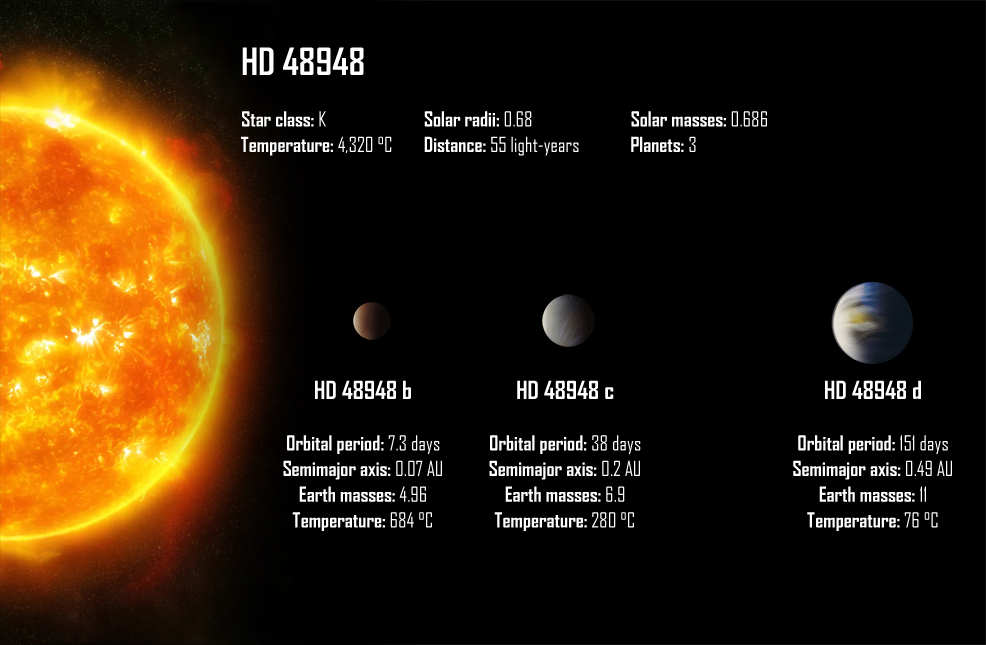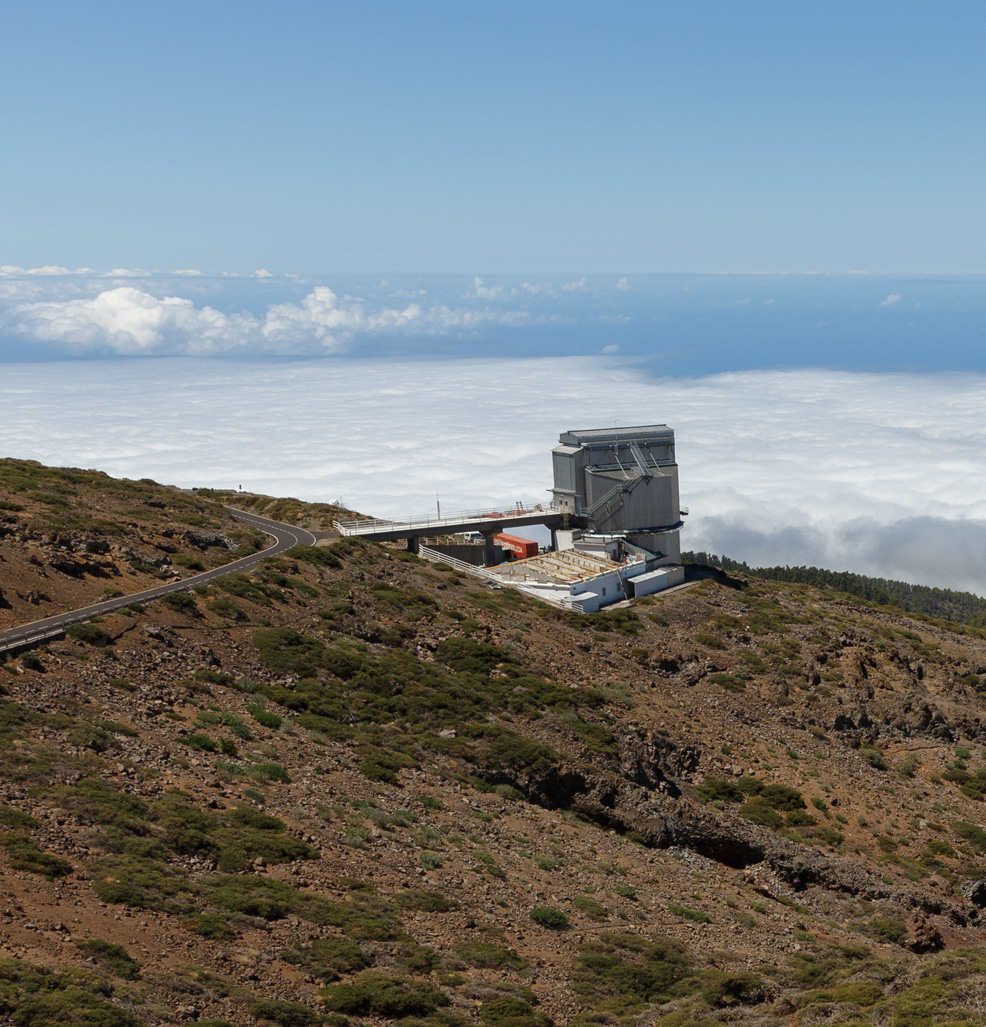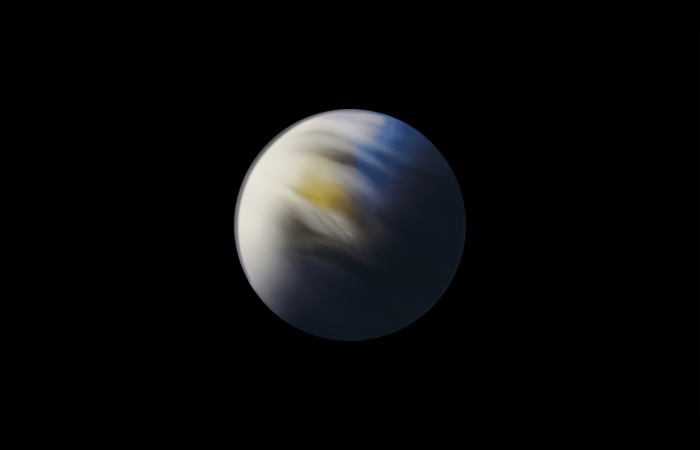
26th June 2024 Trio of Super-Earths found, with one in habitable zone Astronomers report the discovery of three Super-Earth candidates around HD 48948, a K-type star located 55 light-years away. One planet lies within the habitable zone.
An international team of astronomers led by the UK's University of Exeter has made a significant exoplanet discovery, using the Galileo National Telescope on the island of La Palma, Spain. As part of the Rocky Planet Search program, a collaborative effort among multiple institutions, they observed a star called HD 48948, located 55 light-years away. Their study, which took nearly a decade, has identified three so-called "Super-Earths", including one in the habitable zone where liquid water may exist. The Galileo National Telescope, originally completed in 1998, received an upgrade in 2012 with the addition of an instrument called HARPS-N (High Accuracy Radial velocity Planet Searcher – North). This can achieve sub-metre-per-second precision in radial velocity measurements, making it highly effective at detecting worlds that are smaller than gas giants. For this study, researchers collected nearly 190 measurements from the HARPS-N spectrograph. Over many years, it tracked the star's movements including subtle changes caused by orbiting planets.
The results, obtained from 2013–2023, are published this week in Monthly Notices of the Royal Astronomical Society. They reveal intriguing details that are likely to produce follow-up studies with more powerful telescopes. HD 48948 b, the innermost planet, orbits the star every 7.3 days and has 4.96 Earth masses. Its equilibrium temperature is around 684 °C (1,263 °F), making it far too hot for liquid water (Venus, for comparison, has a surface temperature of 465 °C). The middle planet, HD 48948 c, has an orbital period of 38 days and 6.9 Earth masses. With an estimated temperature of 280 °C (536 °F), its surface is likewise too hot to support liquid water. The most interesting find is HD 48948 d, the outermost planet. Its orbital period is 151 days, and it has a semi-major axis of 0.49 astronomical units (AU), meaning its distance from the star is 49% of the distance between our Sun and the Earth. Its equilibrium temperature is 76° C (169 °F), placing it within the range where liquid water could potentially exist, assuming it has an atmosphere that can regulate its surface temperature. This world is the heaviest of the three, with about 11 Earth masses, but is less massive than Uranus (15) and Neptune (17).
HD 48948 – the star itself – is an orange, K-type main sequence star with 68% of our Sun's diameter and 69% of its mass. Its effective temperature of 4,320 °C (7,808 °F) is around 83% that of our Sun. There are 2,000 stars within 55 light-years of Earth, ranging from dwarfs to giants, with types F, G, and K considered the most Sun-like. Going by that definition, HD 48948 is now the closest planetary system known to host a Super-Earth in the habitable zone around a Sun-like star. Subsequent studies – perhaps including high-contrast direct imaging – may generate a more detailed and comprehensive dataset, such as the precise size and composition of each planet, as well as possibly revealing additional planets in the system. "The discovery of this Super-Earth in the habitable zone around an orange star is an exciting step forward in our quest to find habitable planets around solar-type stars," said Dr Shweta Dalal, lead author and post-doctoral researcher. "Providing insights to the human race's long-standing question, 'Are we alone?' is always thrilling," said Dr Ancy Anna John, a post-doctoral researcher from the School of Physics and Astronomy at the University of St Andrews. "The discovery of these three super-Earth companions around a nearby star is a crucial stride towards the search for a cosmic twin, particularly the outer planet that is found in the habitable zone, orbiting the star every 151 Earth days. This planet emerges as a promising target for our future missions that are devoted to finding habitable worlds, such as NASA's Habitable Worlds Observatory (HWO), the Habitable Exoplanet Observatory and the European Space Agency's Large Interferometer For Exoplanets (LIFE) Mission."
Comments »
If you enjoyed this article, please consider sharing it:
|
||||||









